To the American people, Fort McHenry is the most important symbol of continued American freedom in the face of the British Empire, due to one single action during the greater War of 1812. Situated on a spit of land and stands to this day watching over Baltimore’s harbour. The original fort, however, was not called McHenry, but rather Fort Whetstone. Constructed on Whetstone Point, the five-point star earthworks fort was placed in an ideal spot to defend the city without its guns endangering the city itself. Whetstone was constructed by the Continental Army to defend Baltimore against potential British attacks which never materialised.
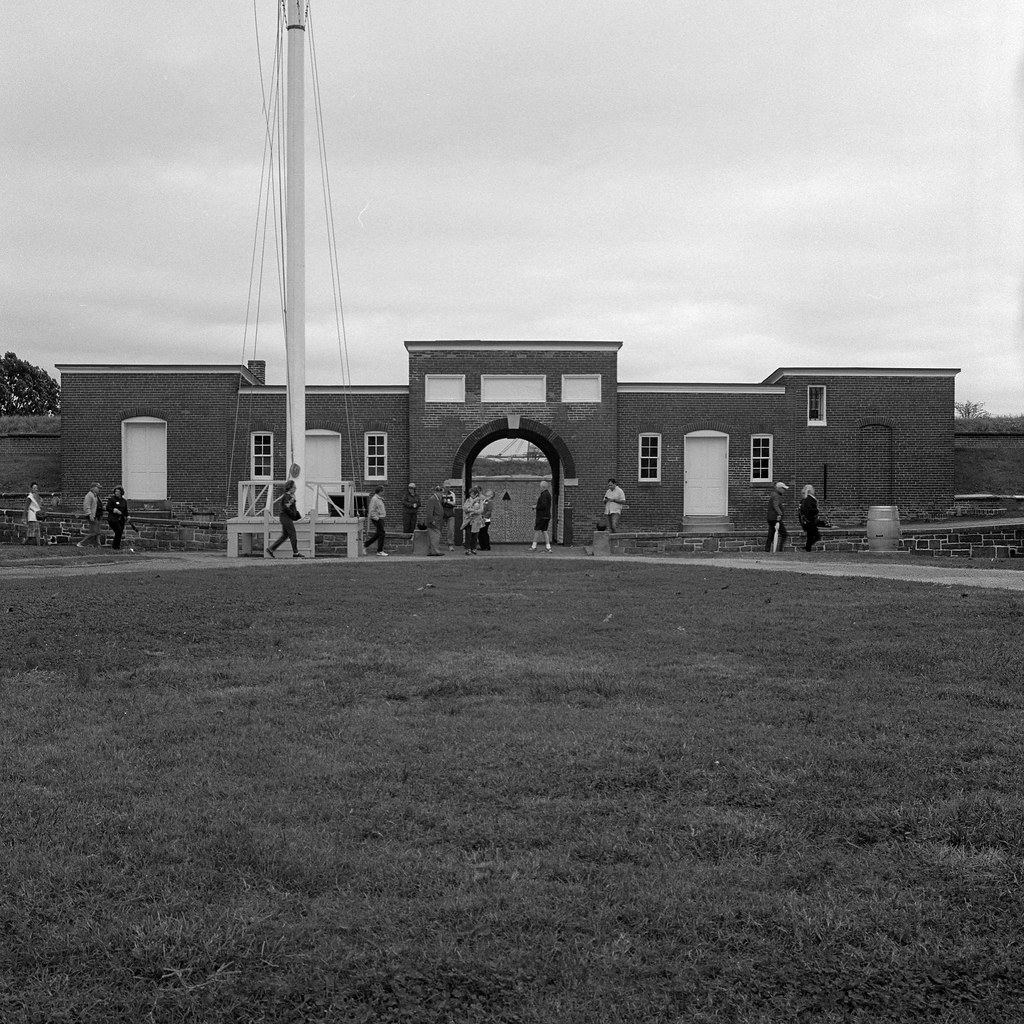
Hasselblad 500c – Carl Zeiss Planar 80mm 1:2.8 – Kodak Tri-X 400 @ ASA-400 – Kodak D-23 (Stock) 7:30 @ 20C
As the 18th-Century came to a close, the War Department earmarked 20,000$ for improvements at Whetstone Point in 1797. Construction of a new masonry fort began in 1798 based on a design by Jean Foncin with the construction of the new fort was completed in 1800. The new fortification would take the name Fort McHenry, named for the Secretary of War, James McHenry. James McHenry had served as an Army Surgeon during the American Revolution and had been personally chosen by President Washington as Secretary of War in 1796. The new fort followed the same pattern as the original, using a star pattern. Inside the fort stood stone barracks, a powder magazine and separate quarters for the commanding officer. The fort’s guns would ensure that no ship could easily approach Baltimore. Additional guns and a dry ditch along the landward side made any infantry attack near impossible. The only way Fort McHenry could be taken would be a combined artillery bombardment from both the land and the harbour.
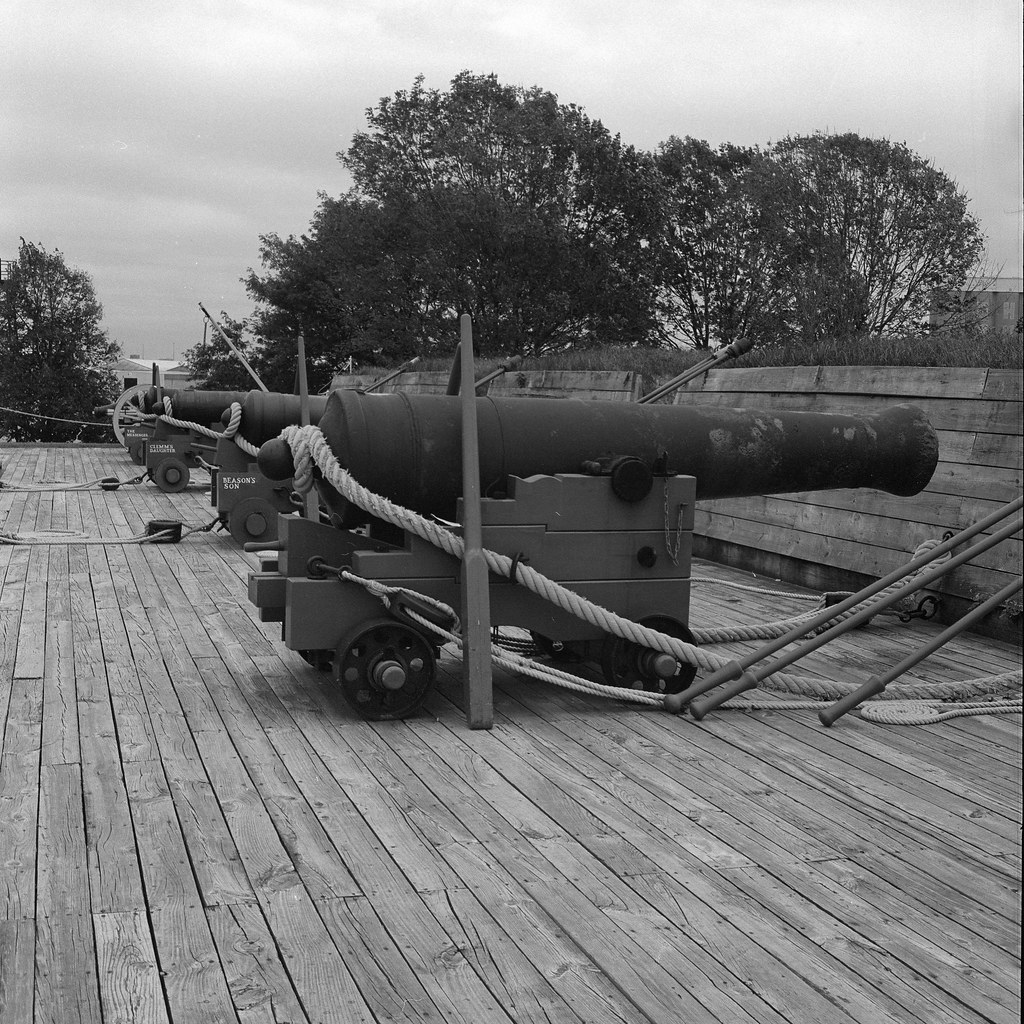
Hasselblad 500c – Carl Zeiss Planar 80mm 1:2.8 – Kodak Tri-X 400 @ ASA-400 – Kodak D-23 (Stock) 7:30 @ 20C
For a majority of the War, Fort McHenry stood as a silent sentry over Baltimore. But all would not be quiet, with the abdication of Napoleon in 1813, the Royal Navy could step up its operations on the American eastern seaboard. Baltimore knew they would be a tempting target for any British assault, Major George Armistead, having received the post after his role in the capture of the Niagara region in the spring of 1813, moved to improve the fortifications of Fort McHenry, General Samuel Smith fortified the city. As a personal touch, Armistead ordered a new garrison flag made by a local woman to rival the flag he had at his former post, Fort Niagara.
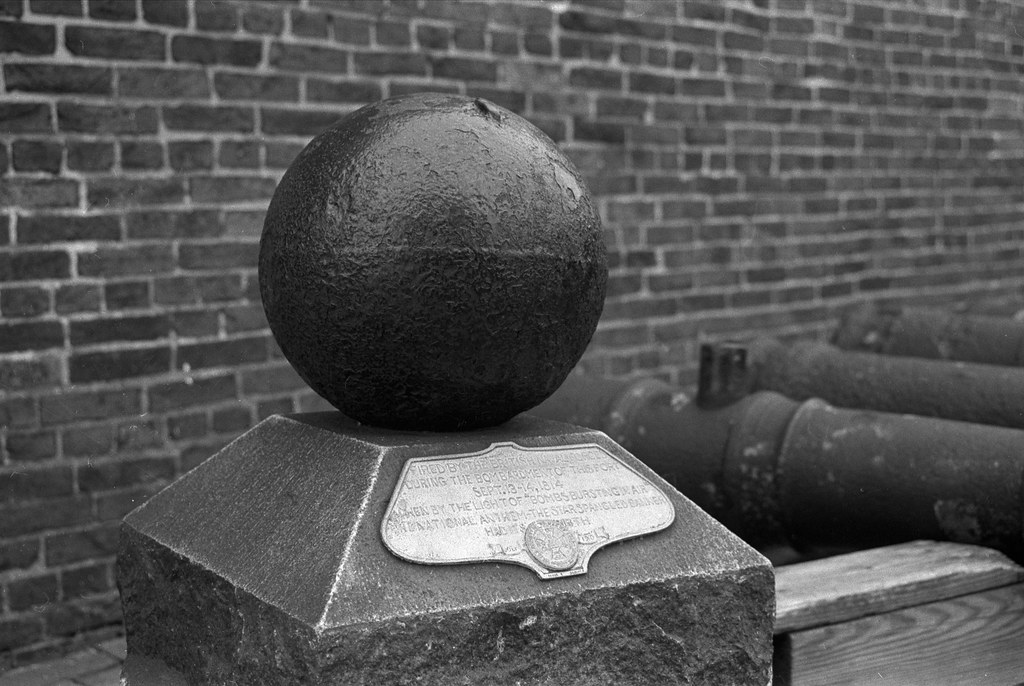
Minolta Maxxum 700si – Maxxum Zoom AF 35-70mm 1:4 – Eastman Double-X (5222) @ ASA-200 – FA-1027 (1+19) 10:00 @ 20C
On 13 September 1814, the attack did come. A British assault fleet would over the course of 27 hours fire over 2,000 projectiles at a range of 3 kilometres at the fort. McHenry would only suffer damage to the powder magazine (thoughtfully emptied) and one of its bastions. The British would withdraw having failed to break the fort. The attack, witnessed by Francis Scott Key, would inspire the Washington Lawyer to pen the poem “The Defense of Fort M’Henry.” While the fort would stand, and Armistead would earn a brevet promotion to Lieutenant-Colonel. While the fort would not see another attack during the war, Armistead remained at his post until his death, possibly caused by post-traumatic stress from the bombardment.
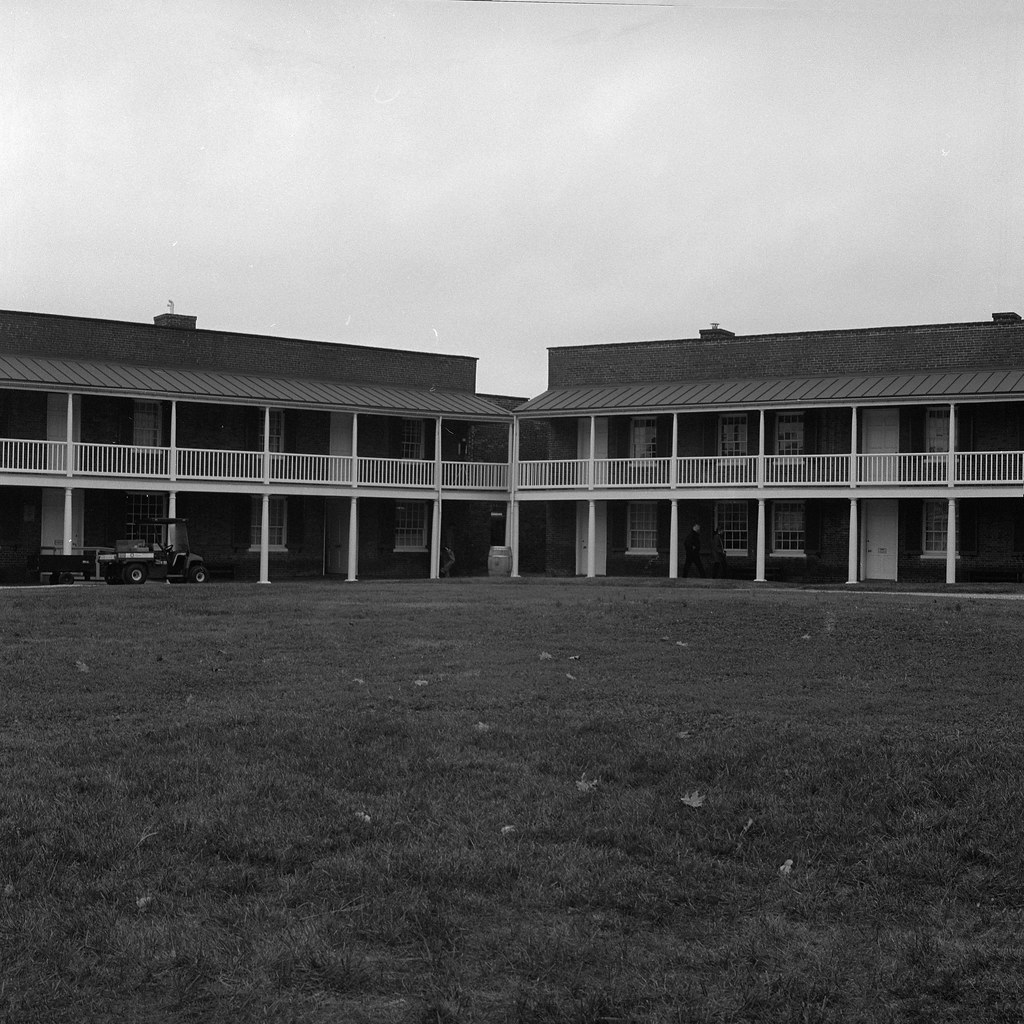
Hasselblad 500c – Carl Zeiss Planar 80mm 1:2.8 – Kodak Tri-X 400 @ ASA-400 – Kodak D-23 (Stock) 7:30 @ 20C
And while relations between the USA and England would improve, the Fort would remain intact and manned. Internal structures would be torn down and replaced or expanded as the fort’s garrison grew. When the United States was torn in two during the American Civil War, Fort McHenry would serve a dual purpose. The first purpose would be to train front-line gunners, to that end a battery of Rodman Guns were installed. The second, darker purpose, was a military prison. Fort McHenry housed both Confederate soldiers captured in battle but also local citizens feared to have leanings towards the Confederate States of America. In an odd twist of irony, Francis Key Howard, the grandson of Francis Scott Key, was held as a prisoner at the fort. When the civil war ended in 1865, it marked the end of many masonry forts, improvements in range, accuracy and power of artillery showed that no fort could withstand modern bombardment. But the post continued to serve, and when the United States entered The Great War in 1918, Fort McHenry would serve as a hospital for AEF troops returned from the Western Front for further treatment and recovery. But when the war ended, only a handful of months since the Americans entered the war, the use as a hospital soon ended.
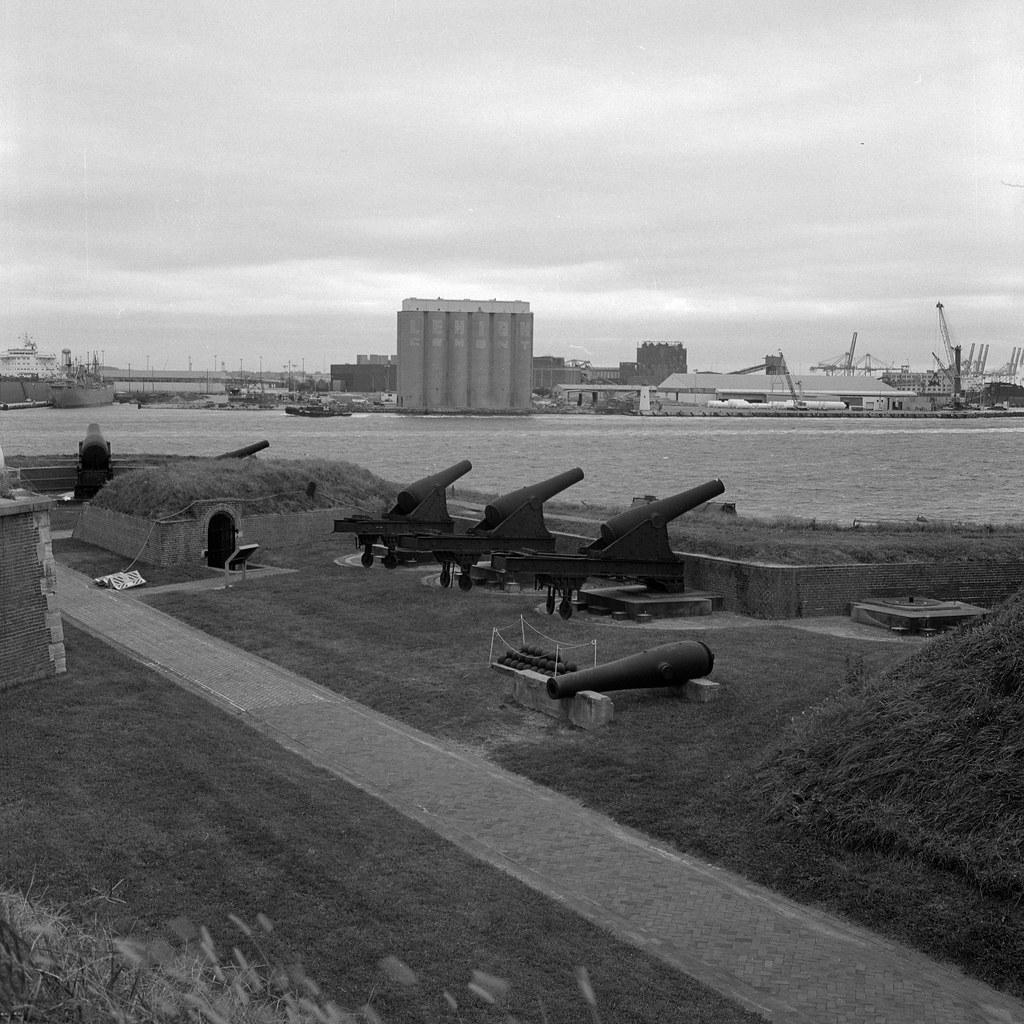
Hasselblad 500c – Carl Zeiss Planar 80mm 1:2.8 – Kodak Tri-X 400 @ ASA-400 – Kodak D-23 (Stock) 7:30 @ 20C
But the fort itself had already become a point of interest for the city of Baltimore, it’s role in the War of 1812, while small, had earned a big reputation for such a small post. It was the birthplace of the 15-Star, 15-Stripe Star Spangled Banner, solidifying American flag design going forward. The site saw designation as a National Park in 1925, and when the Star Spangled Banner, a song based on the Francis Scott Key’s poem became the American National Anthem in 1931, the move to create the fort into a National Shrine and Memorial would be passed in 1936. The fort also earned the distinction of being the first place any new design of the American flag would fly before being distributed widely. The Fort would again serve the American Armed forces as a Coast Guard post through the Second World War. It wouldn’t be until 1966 that the fort would receive a national historic place designation.
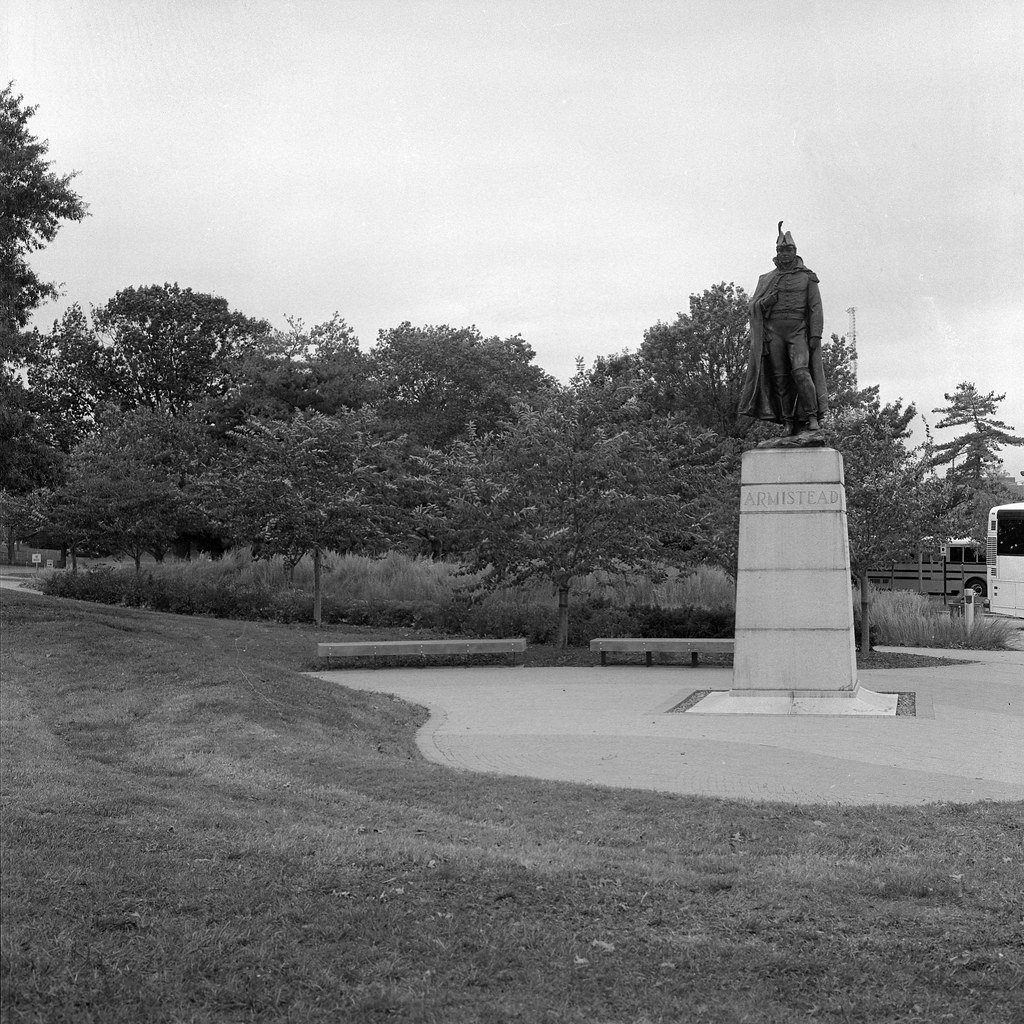
Major George Armistead would earn fame during his historic defence during the British Bombardment of 1814, but the effects of that bombardment would lead to an early grave.
Hasselblad 500c – Carl Zeiss Planar 80mm 1:2.8 – Kodak Tri-X 400 @ ASA-400 – Kodak D-23 (Stock) 7:30 @ 20C
Today the army has long abandoned the fort, and it serves as the most popular tourist designation in Baltimore, Maryland. The original Fort stands as it would have during the War of 1812 and American Civil War. Much of the hospital buildings that were constructed during the Great War and Coast Guard buildings of the Second World War have long been torn down. The original garrison flag also survived through the 200 years of its existence and is today restored and on display as part of the Smithsonian’s permanent collection in Washington DC. I wish I could have included an image of it, but photography is prohibited and enforced. But you can check out their online exhibit.
Written With Files From:
Collins, Gilbert. Guidebook to the Historic Sites of the War of 1812. Toronto: Dundurn, 2006. Print
Hickey, Donald R. Don’t Give up the Ship!: Myths of the War of 1812. Urbana: U of Illinois, 2006. Print.
Hickey, Donald R. The War of 1812: A Forgotten Conflict. Urbana: U of Illinois, 1989. Print.
Lossing, Benson John. The Pictorial Field-book of the War of 1812 Volume 2. Gretna, LA: Pelican Pub., 2003. Print.
Web: www.nps.gov/fomc/index.htm
Web: wardepartmentpapers.org/document.php?id=27413
Web: www.hahs.us/flags/r18.pdf